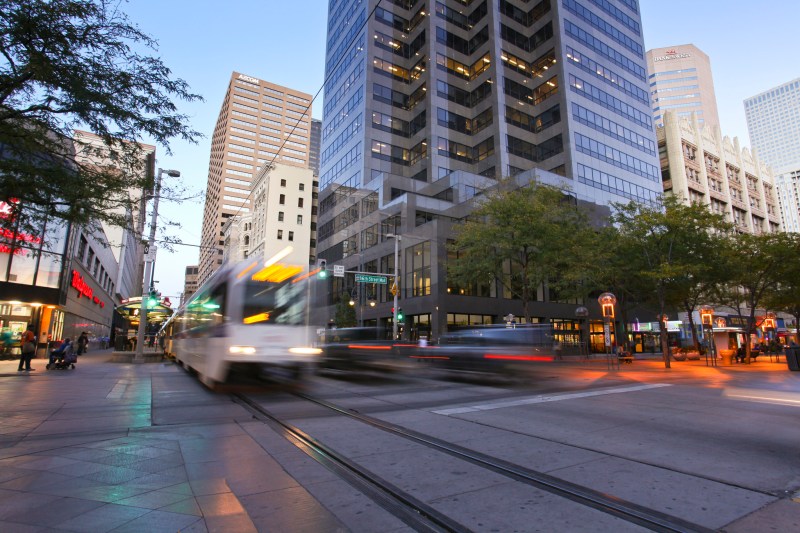Number of People Killed on Denver’s Streets Rose Sharply Last Year, Continuing Upward Trend

Traffic fatalities increased 16 percent last year, despite a pledge from Mayor Hancock to make the roads safer.
The growing number of people killed on Denver’s streets continues an upward trend over the last five years—and safety advocates are losing patience.
“The urgency now is in implementation,” says Jill Locantore, executive director of Walk Denver. “We have a really strong plan, but the city has not made a lot of progress on actually implementing those actions steps.”
Denver committed to end all traffic fatalities by 2030, a goal that came out of the Vision Zero movement, which originated in Sweden in the 1990s. Cities that sign onto the plan pledge to upgrade streets with measures like narrower traffic lanes, pedestrian refuges and automated traffic enforcement, which have proven effective in cities New York, where fatalities have declined since 2014.
Denver says it’s making progress, but elected officials obstructed a critical component the city’s Vision Zero plan already this year.
The city nearly approved a modest expansion of its red light camera program, which would have added automated enforcement on high-injury corridors. But despite rising fatalities and evidence proving that the cameras reduce deadly crashes, the Denver City Council voted unanimously earlier this month to put the program on hold—a decision they based on a dubious argument from Councilman Kevin Flynn.

“If more than one person per week were dying because of food poisoning, we’d all be declaring this a major public health crisis,” says Locantore about the 58 deaths on Denver’s streets last year. “It’s really unfortunate that we’ve become so numb to traffic fatalities that we just accept them as part of daily life.”
In addition to camera enforcement, Denver could also follow New York’s lead by increasing regular traffic enforcement and installing low-cost street design treatments like painted pedestrian refuges and plastic bollards to narrow streets and slow traffic, says Locantore.
Despite the setback in the city council, the Department of Public Works will expand its street safety efforts this year. It recently ramped up the number of people working on street safety issues and it has $27 million allocated for safety and mobility improvements in the 2019 budget, says Heather Burke, a spokeswoman for the agency who listed more than a dozen improvements coming this year. The city also will finalize its Denveright planning process this year, which will include safer street design guidelines that will be implemented over the next 20 years.
“The answer is out there,” says Locantore. “Other cities are demonstrating the path forward. We just need the political will and the resources to do so here.”



